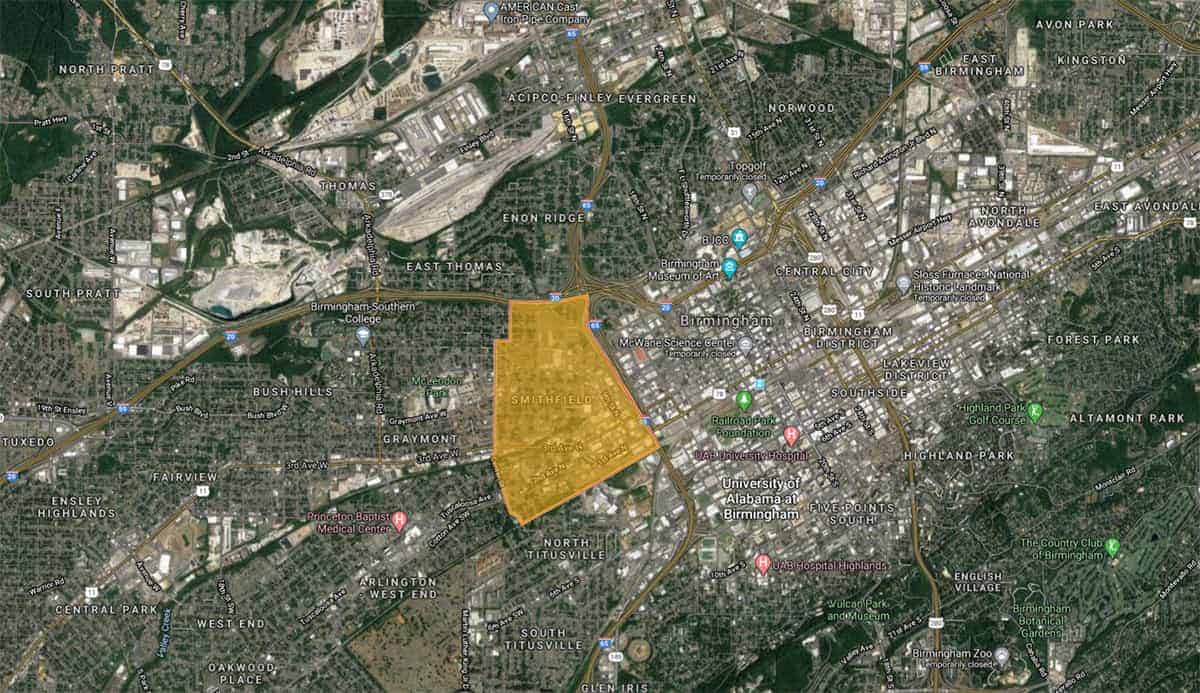Planning for a Reconnected Smithfield

Established in the 1890’s, the Smithfield District in Birmingham, Alabama, had “the city’s earliest and most substantial concentration of black, middle-class residences, small commercial enclaves & churches,” indicative of “the lifestyles of a wide spectrum of black Birmingham citizens in the early 20th century.” (The Historical Marker Project) Smithfield, which is immediately adjacent to the city’s downtown core, and with its significant historic roots as a thriving African-American community, was a departure point for the seminal civil rights marches that occurred in Birmingham during the early 1960’s. Soon after, however, the community was “redlined” as many other African American neighborhoods were at that time, and Smithfield’s connections to downtown were largely severed by the construction of Interstate 65. At that time many of its educated and prosperous residents fled the neighborhood, leaving it to exist as a disconnected and marginalized community.
The students and faculty of Auburn University’s Urban Studio addressed different ways to re-vitalize and re-connect the currently isolated and marginalized Smithfield neighborhood. Initially developing a schematic design master plan for the neighborhood, Urban Studio students and faculty strategically prioritized the redevelopment of a key area to better connect and rejuvenate the larger neighborhood. Informed by an analysis of the neighborhood’s history and existing conditions, and empowered by discussions with stakeholders and interviews with residents, student proposals include new housing, recreational and educational opportunities, a walk able street network, a refreshed take on the troubled relationship between the police and local residents, and the “simple” addition of missing, everyday neighborhood uses.
Throughout the process the Urban Studio faculty stressed that empathy is required to develop appropriate solutions for the Smithfield neighborhood residents. By providing an empowered path for the community, the Urban Studio students, themselves, were also empowered.
(featured image credit: Landsat / Copernicus, Maxar Technologies, U.S. Geological Survey, USDA Farm Service Agency, Map data © 2020 Google)
See more in:
Student Experience,
Student Work,
Urban Studio
Related people:
Alex Krumdieck